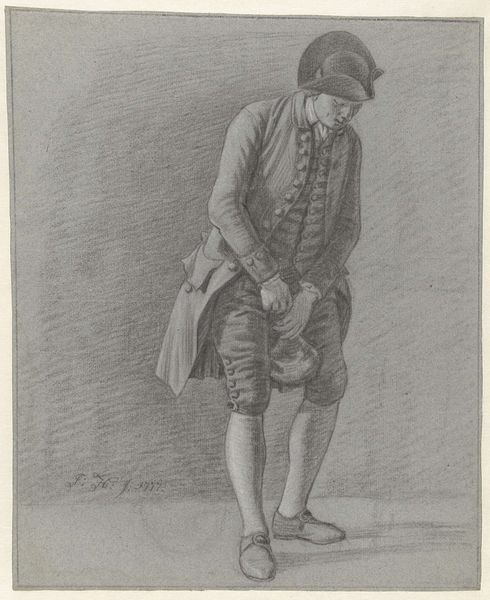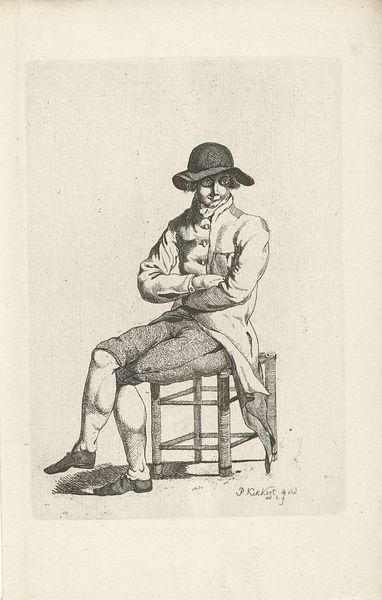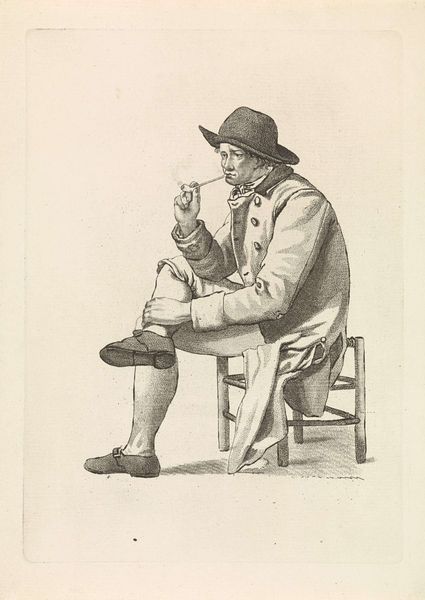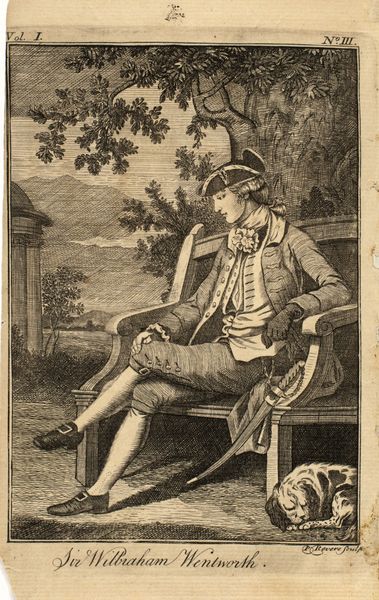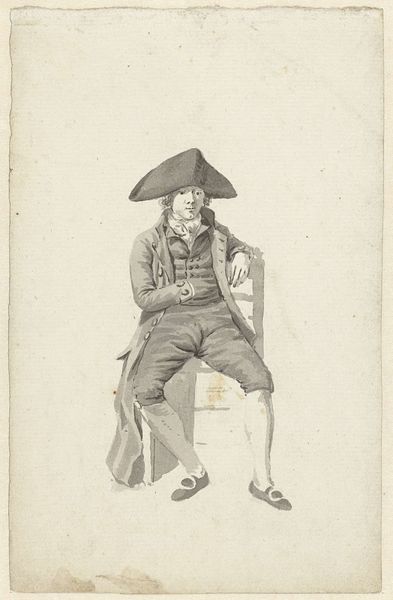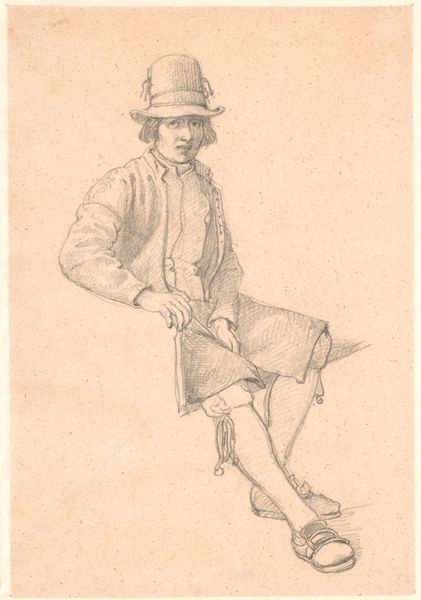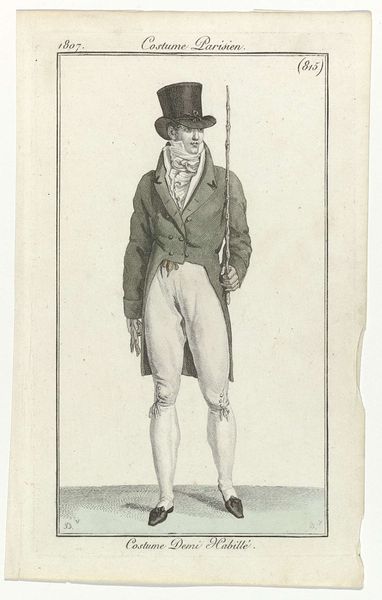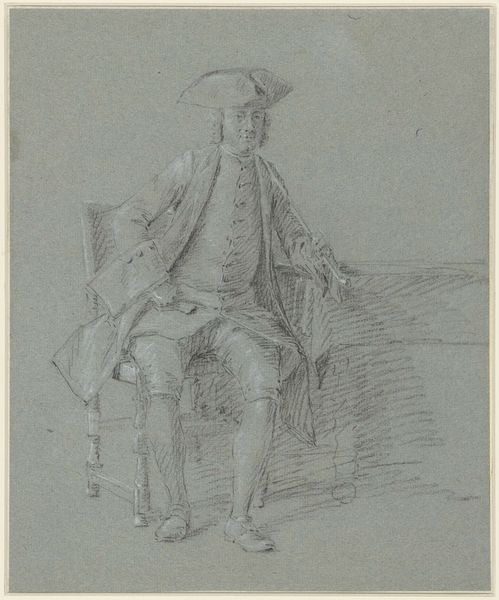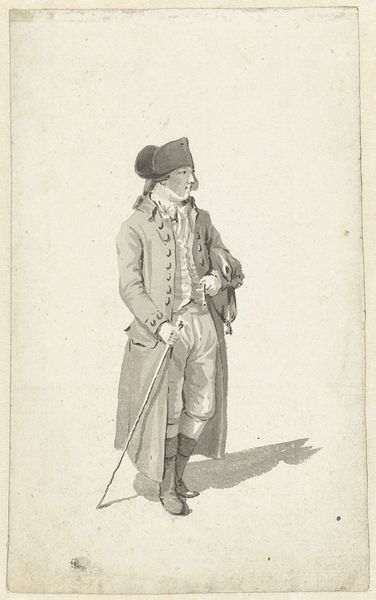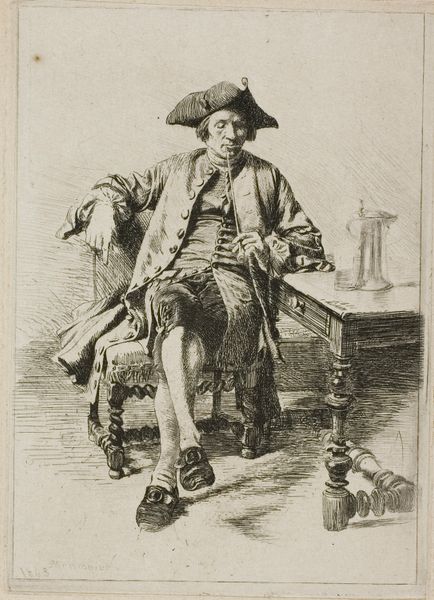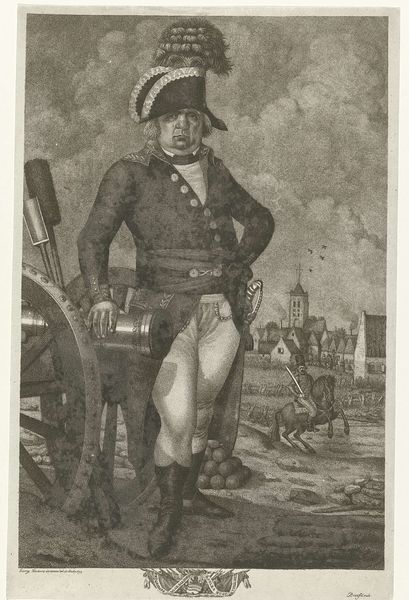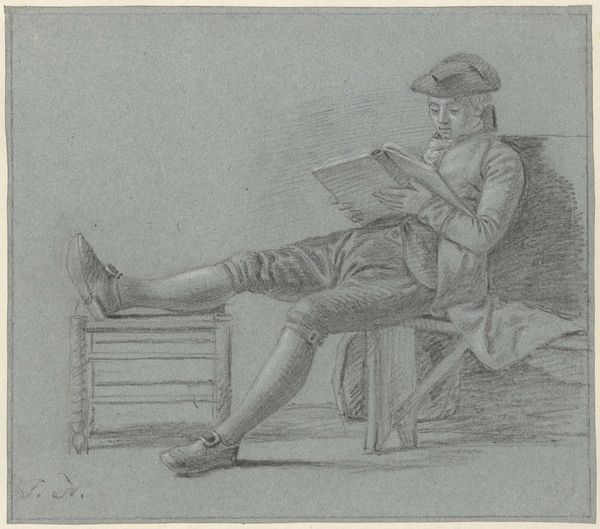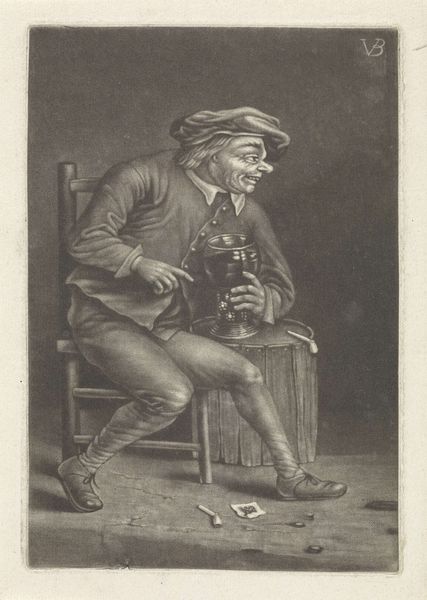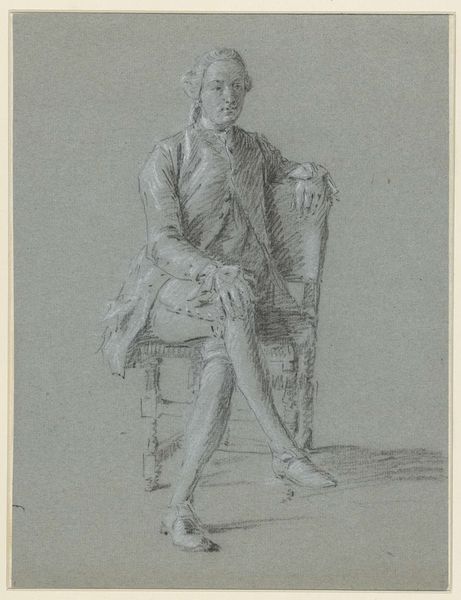
drawing, pencil
#
portrait
#
drawing
#
charcoal drawing
#
figuration
#
pencil drawing
#
romanticism
#
pencil
#
portrait drawing
Dimensions: height 328 mm, width 276 mm
Copyright: Rijks Museum: Open Domain
Curator: Here we have "Zittende man met gekruiste benen," or "Seated Man with Crossed Legs," a drawing rendered in pencil by Jordanus Hoorn, likely created between 1763 and 1833. It captures a gentleman in repose. What are your initial thoughts? Editor: Immediately, I'm drawn to the evident effort and time invested in producing such a precise piece. The very choice of pencil, with its inherent ability for meticulous detail, speaks volumes about the artist's intent. I wonder about its accessibility within Hoorn’s social circles. Curator: Absolutely. Consider how the crossed legs, then, might subtly hint at a self-assuredness. His casual posture, the hand gently supporting his head – these visual cues work together. It reflects Enlightenment ideals of cultivated leisure. What does his attire convey to you? Editor: The detailed rendering of his clothes – the buttons, the cut of the coat – certainly indicates a particular social standing. The quality of his attire likely reflects economic conditions of that time, possibly hinting at trade relations or the availability of particular fabrics. Did Hoorn prepare the pencil himself, or was this purchased from workshops that distributed material worldwide? Curator: An excellent question, considering that access to art materials itself signals privilege and class. His clothing, certainly, reflects the style of the period, yet perhaps, something more. What do you notice about the table? Editor: The table, though sketched in, seems secondary to the figure. More detail went into the chair itself. It looks as if pencil sketches or drawings, when preserved carefully, really represent long-term resources for economic and historical information. What kind of statement might that entail? Curator: A statement about value, indeed. These detailed pencils reflect artistic value—that art transcends fleeting moments, capturing enduring truths. And I suppose, his act of observation itself, making a portrait in this way… it gives him a certain degree of control. Editor: It gives the subject a form of control as well—how their material and culture will be perceived by audiences in future years. Art is material memory, I always say! Curator: Well, looking at the picture has now led us to the heart of cultural memory. How fascinating! Editor: Indeed. This exercise truly underscored the intricate dance between material objects and social perception.
Comments
No comments
Be the first to comment and join the conversation on the ultimate creative platform.
